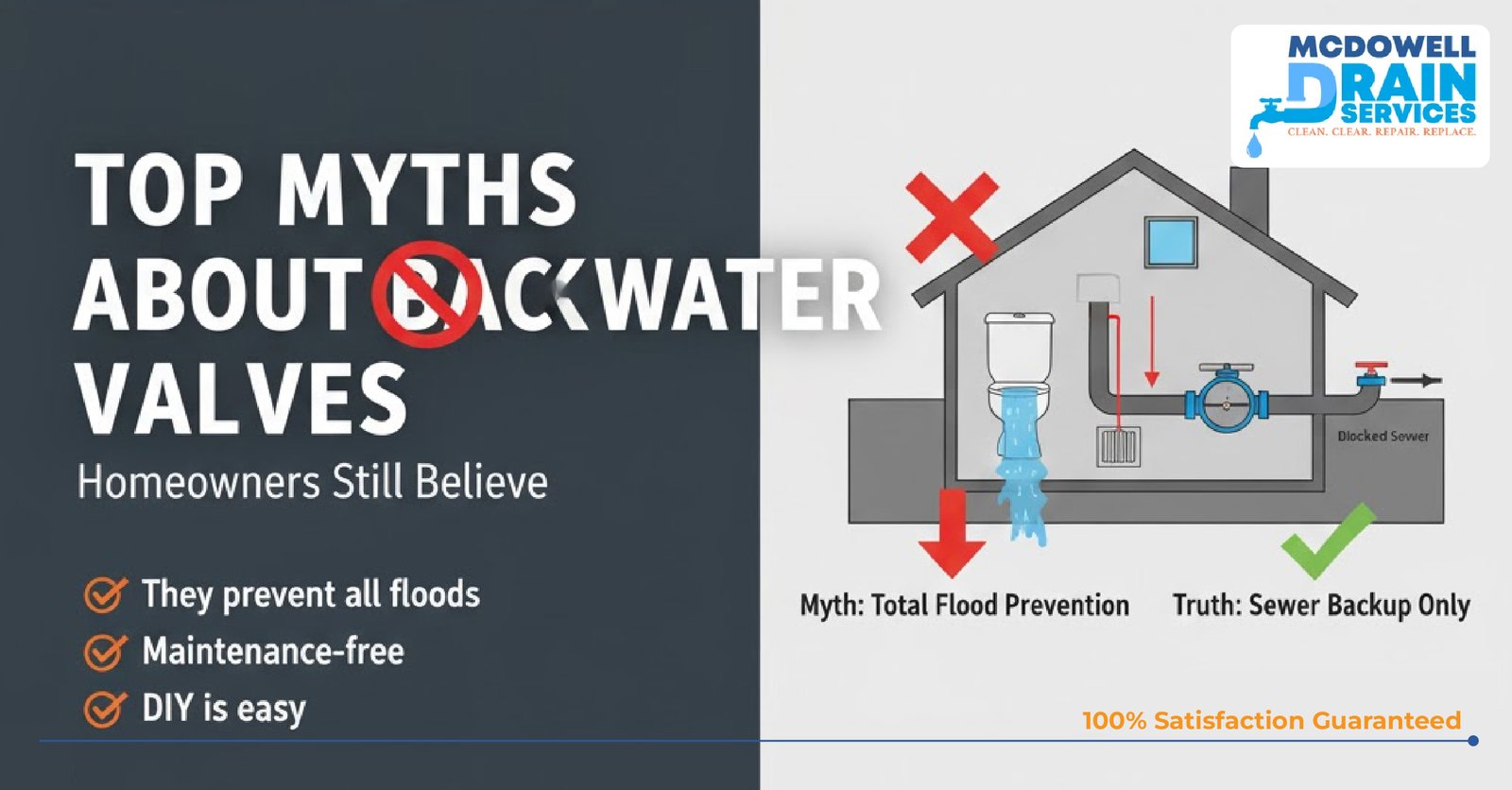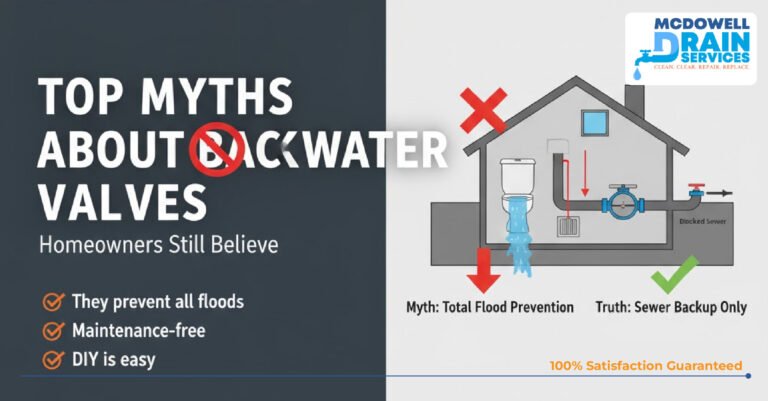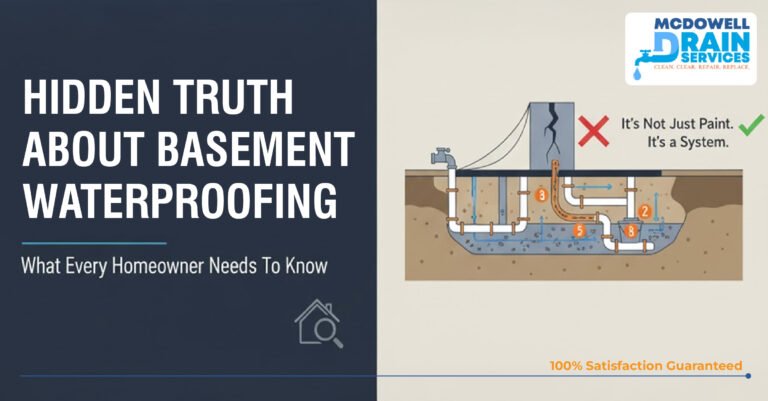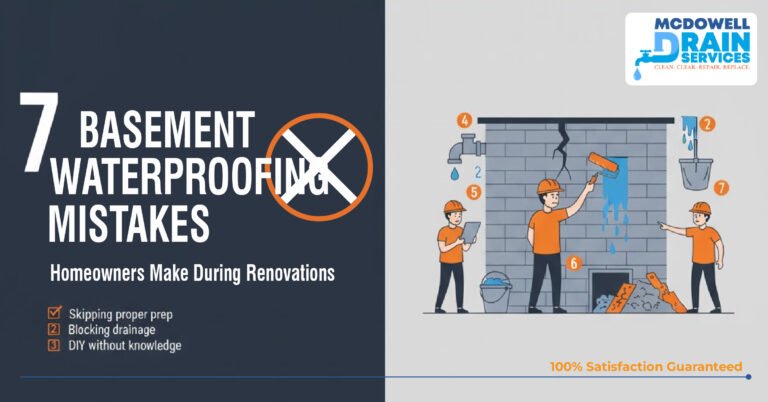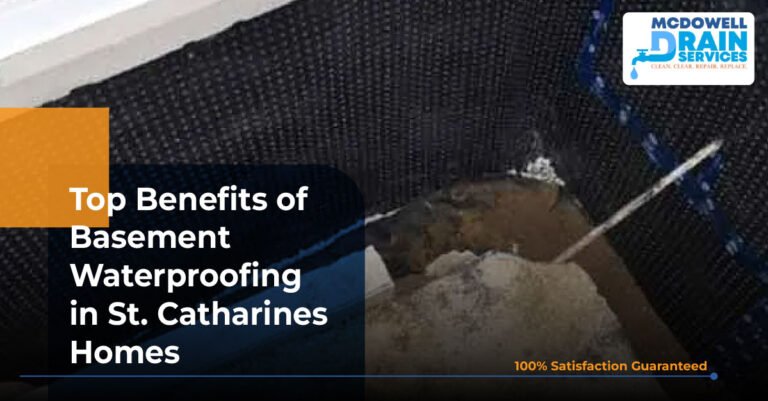Backwater valves don’t get much attention until a disaster strikes. Most people only hear about them after a sewer backup has already turned their basement into a mess.
What’s tricky is that there are a lot of half-truths and wrong assumptions floating around. These myths lead homeowner to skip installation, delay maintenance, or place their valve incorrectly – and that is when problems begin.
Let’s break down the most common myths one by one and clear the confusion.
1. My basement has never flooded, so I don’t need a valve.
This is probably the most dangerous assumption.
Just because your basement hasn’t flooded yet doesn’t mean it never will. Sewer backups often happen suddenly during heavy rain, municipal blockages, or even construction work nearby. By the time water pushes its way up through your floor drain, it’s too late to react.
Think of a backwater valve like a safety belt. You don’t put it on because you expect an accident every time you drive you wear it because one bad moment is all it takes. Installing a valve before a problem happens is always cheaper than cleaning up afterward.
2. Once installed, a backwater valve doesn’t need any maintenance.
This one spreads fast and it’s completely false.
Backwater valves have moving parts. There’s a flap inside that closes when water tries to flow the wrong way. Over time, debris like grease, tissue, or small objects can build up inside the valve. If that flap doesn’t close properly, the whole system fails.
A quick inspection once or twice a year is usually enough. You don’t need a plumber every time, but it’s smart to have one check it regularly especially before the rainy season. Skipping maintenance is like never checking your smoke alarm and hoping it works during a fire.
3. I can install it anywhere on the line and it’ll work.
Placement is everything.
The valve needs to be installed on the main sewer line, downstream of all basement fixtures. If you put it on the wrong branch, wastewater from your own sinks or toilets could back up inside your house because it’s not passing through the valve.
A proper plumber will study your drainage layout, find the exact point where all lines merge, and place the valve there. It’s not guesswork a few feet in the wrong direction can make the difference between full protection and zero protection.
4. One valve will automatically protect the entire house.
Not always.
Many homes, especially older ones, have multiple drain lines repair. A basement bathroom might connect to a different line than your laundry area. If only one of those lines has a valve, the others are still open for backup.
In these cases, you might need more than one valve, or a combination of a main valve and branch protection. A proper inspection can tell you what’s actually needed. Don’t assume one valve is a magic fix for every pipe in your home.
5. Backwater valves are only for flood-prone neighborhoods.
Nope. Sewer backups don’t only happen near rivers or in low-lying areas. A sudden clog in the city’s sewer line, a collapse caused by tree roots, or a surge from a nearby building can send wastewater right back toward your house even on a clear sunny day.
In fact, some of the worst backups happen far from flood zones because homeowners simply weren’t prepared. Whether you live on a hill or in a suburb, a backwater valve protects you from what happens downstream, not just what falls from the sky.
Quick Myth vs. Reality Table
| Myth | Reality |
| Never flooded = no valve needed | Sewer backups can happen without warning |
| No maintenance needed | Annual inspection keeps it working properly |
| Placement doesn’t matter | Must be on the main sewer line, downstream |
| One valve covers everything | Some homes need multiple valves |
| Only for flood zones | Sewer backups can happen anywhere |
6. Installation costs too much I’ll take my chances.
Here’s the truth: the cost of installing a valve is nothing compared to the cost of cleaning up a sewage flood.
Replacing drywall, flooring, furniture, and personal items contaminated by sewage can easily run into thousands. Add in disinfection, labor, and potential insurance battles, and the bill skyrockets.
Most homeowners spend less on installing a valve than they would on a single cleanup. It’s a one-time expense that protects you for years.
7. If something happens, the city will handle it.
This one surprises people.
Cities are responsible for the public sewer system the part under the street. Everything from your property line inward is on you. If sewage backs up into your basement, you’re responsible for cleanup and repairs.
Some cities even offer partial rebates for valve installations because they know it reduces pressure on the entire system. But at the end of the day, it’s your property, your pipes, and your responsibility.
8. I’ll just use waterproof paint or plug the drain.
This is a shortcut that never works.
Waterproof paint might stop surface moisture, but it won’t hold back water under pressure. And plugging a drain can create more problems by trapping air or forcing water to find another way in. A backwater valve is designed to close automatically against reverse flow. Paint and plugs aren’t.
Real-World Example
A homeowner in a quiet residential area never had a single water issue for 15 years. One summer, after a sudden cloudburst, the city’s main line got overloaded. Within minutes, sewage started coming up through the basement floor drain. By the time they noticed, the water level was ankle-deep, and the cleanup took weeks.
The cost of that mess? Over $12,000.
The cost of a backwater valve installation they could have done earlier? Around $1,500. One small decision could have saved them everything.
Why Busting These Myths Matters
Basement floods don’t just damage property they create serious health risks. Sewage water carries bacteria, viruses, and contaminants that can linger even after the surface looks clean. Mold growth can begin within 24–48 hours.
Backwater valves aren’t fancy gadgets. They’re simple, mechanical devices that work quietly in the background until the day they save you thousands of dollars.
Final Thoughts
Myths make people delay smart decisions.
The truth is straightforward:
- Install a backwater valve before you ever need it.
- Put it in the right place.
- Maintain it once or twice a year.
- And don’t rely on luck or paint to protect your basement.
One smart step now can save you from a flood of stress later.

